Pyle PHMD72 Owner's manual
- Category
- Measuring, testing & control
- Type
- Owner's manual
PyleSport PHMD72 is a versatile and feature-rich metal detector designed to meet the needs of both novice and experienced treasure hunters. With its advanced detection technologies and user-friendly interface, the PHMD72 makes it easy to find hidden treasures, lost items, and more.
The PHMD72 offers four distinct operation modes to suit different searching scenarios:
ALL METAL: Detects all types of metals, making it ideal for general-purpose treasure hunting. DISCRIM: Allows you to eliminate specific metals from detection, such as iron or aluminum, to focus on finding desired targets.
PyleSport PHMD72 is a versatile and feature-rich metal detector designed to meet the needs of both novice and experienced treasure hunters. With its advanced detection technologies and user-friendly interface, the PHMD72 makes it easy to find hidden treasures, lost items, and more.
The PHMD72 offers four distinct operation modes to suit different searching scenarios:
ALL METAL: Detects all types of metals, making it ideal for general-purpose treasure hunting. DISCRIM: Allows you to eliminate specific metals from detection, such as iron or aluminum, to focus on finding desired targets.














-
 1
1
-
 2
2
-
 3
3
-
 4
4
-
 5
5
-
 6
6
-
 7
7
-
 8
8
-
 9
9
-
 10
10
-
 11
11
-
 12
12
-
 13
13
-
 14
14
Pyle PHMD72 Owner's manual
- Category
- Measuring, testing & control
- Type
- Owner's manual
PyleSport PHMD72 is a versatile and feature-rich metal detector designed to meet the needs of both novice and experienced treasure hunters. With its advanced detection technologies and user-friendly interface, the PHMD72 makes it easy to find hidden treasures, lost items, and more.
The PHMD72 offers four distinct operation modes to suit different searching scenarios:
ALL METAL: Detects all types of metals, making it ideal for general-purpose treasure hunting. DISCRIM: Allows you to eliminate specific metals from detection, such as iron or aluminum, to focus on finding desired targets.
Ask a question and I''ll find the answer in the document
Finding information in a document is now easier with AI
Related papers
Other documents
-
Quest Xpointer Waterproof Pinpointer User manual
-
Quest Pinpointer Metal Detector User manual
-
Quest Xpointer Oranje Pinpointer User manual
-
Conrad MD-810 Metal Detector User manual
-
Mercury MED-03 User manual
-
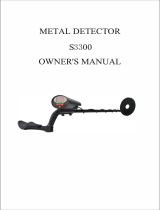 SuperEye S3300 Operating instructions
SuperEye S3300 Operating instructions
-
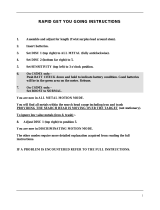 C-SCOPE CS5MX User manual
C-SCOPE CS5MX User manual
-
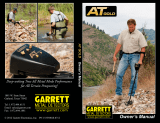 Carrett AT Gold Owner's manual
Carrett AT Gold Owner's manual
-
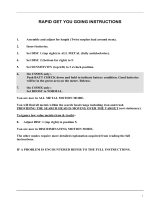 C-SCOPE CS5MX User manual
C-SCOPE CS5MX User manual
-
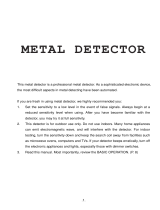 American Hawks METAL30 Owner's manual
American Hawks METAL30 Owner's manual


















